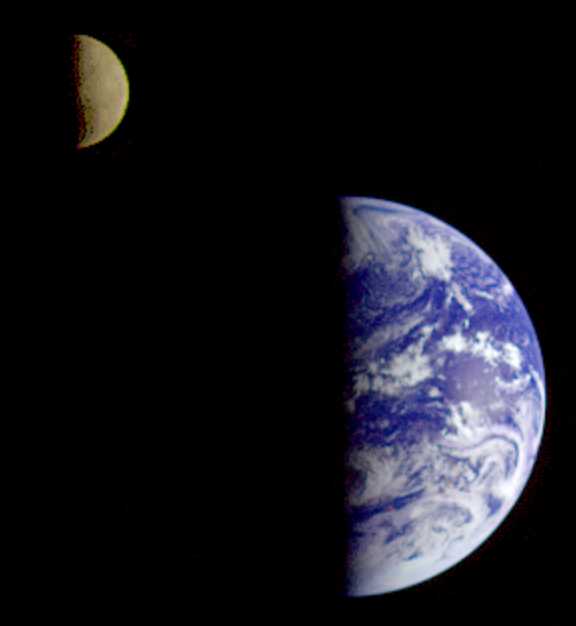![]()
| Home Michael Ammar Solar System Solar System Summary Sun Sun's Statistics Mercury Mercury's Statistics Venus Venus' Statistics Earth Earth's Statistics Mars Mars' Statistics Asteroid Field Asteroid Field's Statistics Jupiter Jupiter's Statistics Saturn Saturn's Statistics Uranus Uranus' Statistics Neptun Neptun's Statistics Pluto Pluto's Statistics Picture Library |
 |
| Earth & Moon
Eight days after its encounter with the Earth, the Galileo spacecraft was able to look back and capture this view of the Moon in orbit about the Earth, taken from a distance of about 6.2 million kilometers (3.9 million miles), on December 16, 1990. The Moon is in the foreground, moving from left to right. The brightly colored Earth contrasts strongly with the Moon, which reflects only about one third as much sunlight as the Earth. Contrast and color have been computer enhanced for both objects to improve visibility. Antarctica is visible through the clouds (bottom). The Moon's far side is seen; the shadowy indentation in the dawn terminator is the south Pole/Aitken Basin, one of the largest and oldest lunar impact features. (Courtesy NASA) |
Send mail to [email protected] with questions or comments
about this web site.
Copyright � 1998 Michael Ammar.